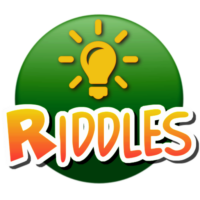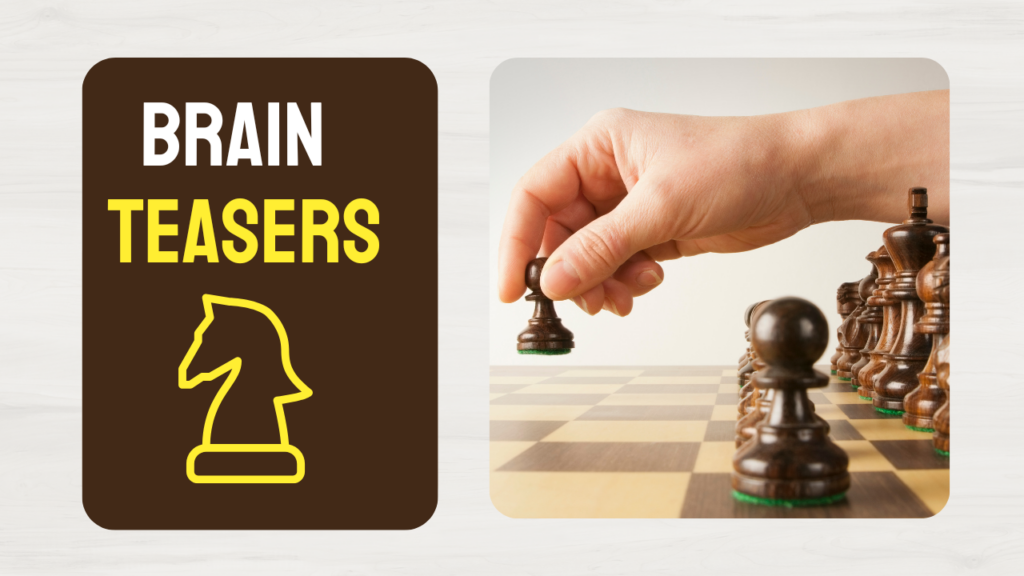Are you ready to challenge your brain and improve your cognitive skills? Look no further! In this blog post, we’ll provide you with 50 brain teasers and lateral thinking puzzles answers that will put your mind to the test. These puzzles are designed to stimulate your critical thinking, problem-solving, and creativity skills, while also providing a fun and engaging way to exercise your brain.
Brain Teasers:
A father and son are in a car accident. The father dies on the scene, but the son is rushed to the hospital. The surgeon comes out and says, “I can’t operate on this boy. He’s my son!” How is this possible?
Answer: The surgeon is the boy’s mother.
What has keys but can’t open locks?
Answer: A keyboard.
How can you make the number 7 even without adding anything to it?
Answer: By removing the letter “s” from its name, “seven.”
What starts with an “e” and ends with an “e” but only contains one letter?
Answer: An envelope.
What has a head, a tail, but no body?
Answer: A coin.
Lateral Thinking Puzzles:
A group of three people are stranded on a deserted island with no means of communication or transportation. They are hungry and thirsty, and there is a bottle of wine and a corkscrew on the island. How can they open the bottle without breaking the bottle or the corkscrew?
Answer: One person can use the corkscrew to remove the cork, and then use the cork to plug the bottle’s opening, allowing the other two people to drink from the bottle.
A man is found dead in a room with no windows and only one door, which is locked from the inside. There is a puddle of water on the floor and a piece of torn paper near the body. The paper has the word “honey” written on it. How did the man die?
Answer: The man was killed by a bee sting, which caused an allergic reaction. The word “honey” was written on the paper to mislead investigators and make them think the death was related to food.
What can you do with a piece of paper that you can’t do with a piece of wood?
Answer: You can write on a piece of paper, but you can’t write on a piece of wood.
A woman has two coins that add up to 30 cents. One coin is not a nickel. What are the two coins?
Answer: One coin is a quarter (25 cents), and the other is a nickel (5 cents).
A man is in a room with no windows, no doors, and no way to escape. He is also surrounded by water on all sides. How can he escape?
Answer: The man can escape by standing up and walking out of the room, as he is already surrounded by water.
How often should I practice these brain teasers to see improvement in my cognitive skills?
Practicing brain teasers and puzzles regularly can help improve your cognitive skills, particularly in areas such as problem-solving, critical thinking, and memory. The frequency of practice will depend on your individual goals and schedule. Here are some tips to help you make the most of your practice:
- Consistency: Aim for consistency in your practice rather than trying to cram all your practice into one or two sessions. Set aside a specific time each day or week that works for you, and try to maintain that schedule.
- Start with a few puzzles: Begin with a few puzzles a week and gradually increase the number as you become more comfortable and confident.
- Mix it up: Vary the types of puzzles you practice to challenge different areas of your brain. For example, you can alternate between logic puzzles, word games, and memory exercises.
- Take breaks: It’s essential to give your brain time to rest and recover. Take breaks between practice sessions to avoid burnout and allow your brain to process and consolidate the information.
- Monitor progress: Keep track of your progress by noting the time it takes to solve puzzles or the number of incorrect attempts. This will help you identify areas where you need to improve and track your progress over time.
- Practice mindfully: Pay attention to your thought process and emotions while practicing. Reflect on what worked well and what didn’t, and adjust your strategy accordingly.
- Stay engaged: Make sure you’re enjoying the process and finding it engaging. If you’re not having fun, it may be a sign that you need to switch to a different type of puzzle or take a break.
- Use technology: Utilize apps, websites, or online forums that provide a variety of puzzles and brain teasers. These resources can help you stay motivated and provide new challenges.
- Join a community: Connect with others who share your interest in brain teasers and puzzles. Join online forums, social media groups, or local clubs to engage in discussions, share tips, and learn from others.
- Be patient: Improving cognitive skills takes time and consistent practice. Don’t get discouraged if you don’t see immediate results; keep practicing, and you’ll eventually notice improvements.
By incorporating these tips into your practice routine, you’ll be well on your way to enhancing your cognitive abilities and maintaining a healthy, active brain.
These brain teasers and lateral thinking puzzles are not only fun and challenging, but they also provide a great way to improve your cognitive skills and boost your creativity. By practicing these puzzles regularly, you can improve your problem-solving skills, enhance your critical thinking abilities, and develop a more innovative and creative way of thinking. So, go ahead and give them a try! Your brain will thank you.


